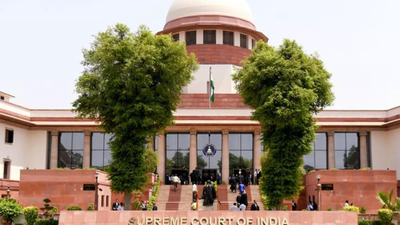11 reasons why Bihar swiped right on Nitish-Modi match | India News

1 The Ni–Mo effectNitish Kumar’s local goodwill paired perfectly with Narendra Modi’s national appeal. Voters read this combo as offering stability+delivery: a CM known for roads, power and policing and a PM identified with scale, speed and organisation. The optics of parity (near 50:50 seat-sharing) and a visibly cordial equation projected ‘co-ownership’ of governance. Major projects for Bihar in the central budget and launch of welfare schemes armour-plated what was already a strong platform. Coming after wins in Maharashtra, Haryana and Delhi, the landslide in Bihar is another sign that the dip in BJP’s Lok Sabha tally was an aberration rather than a pointer to a new pattern. That Modi continues to swing polls, even those where he himself is not on the ballot, despite being at the helm for 12 years, makes for a unique case of political resilience in the age of volatile expectations.2 NDA’s art of running coalitionsThis election was a masterclass demonstration by NDA in both making and running a social and political coalition. The winning alliance expanded its tent by bringing in and even indulging Chirag Paswan with a generous seat share. In hindsight, NDA would have probably made it without Upendra Kushwaha and even Jitan Ram Manjhi. But the need for crafting a wider social coalition prevailed over maximalist calculations. The results were evident at the ground level. BJP and JDU divided seats with unusual clarity, and kept campaign discipline despite inherent contradictions. JDU operated with rare professionalism, with working president Sanjay Jha privileging winnability over sentiments and co-ordinating with BJP’s in-charge Dharmendra Pradhan to select candidates. The joint aim was to ensure district-wise compatibility among partners. This helped iron out local wrinkles. Each NDA partner brought value to the table.
3 Memories of jungle rajThe misgovernance during Lalu Yadav’s tenure remained a powerful theme. Voters still remember the anarchy, corruption, brutish single caste-dominance and general non-governance under the 15-year-long ‘Lalu-Rabri Raj’. After Tejashwi Yadav was projected as CM candidate, the most prominent beneficiary of Lalu’s reign made for an easy target when NDA promised ‘Mangal Raj’. Modi and Amit Shah stuck to this theme throughout the campaign, and got, ironically, effective assistance from overenthusiastic supporters of RJD. NDA had a field day with telling voters about RJD toughies’ ‘dream’ of wielding katta (country-made pistols) and Bhaiyaa Ki Satta (Tejashwi’s govt).4 Women, NDA’s better halfSchemes launched in the run-up to the contest — assistance of Rs 10,000 for members of Jeevika Self Help Group, hike in old-age pension — helped the alliance build upon the big amount of goodwill that was already there because of women quotas in jobs and local bodies, as well as educational assistance, free ration and LPG connection. Plus, there was NDA’s housing schemes, and its delivery of improved law and order. Women were among the worst sufferers of RJD’s Jungle Raj, where crimes like kidnapping and rape were rampant. Women voters seemed pretty determined not to lose the freedom they enjoyed under Nitish-led NDA. Bhojpuri songs like ‘RJD ke maal’ and ‘Ghar se utha leb’ (we will take you away even from your home), rekindled women’s fear that a RJD victory will again confine them to their homes. Reporters covering the campaign frequently came across women who not only forcefully articulated their preference for NDA, but asserted that they would ensure that their menfolk voted as they themselves did. After the two phases, pundits were split in interpreting women’s lead of 10 percentage points over males in turnout. Results leave little doubt what that big women turnout meant.5 Pouncing on MGB’s mistakesModi’s popularity and gratitude for Nitish delivering on basic governance were key factors for NDA when it came to warding off MGB’s and Prashant Kishore’s attempts to cut into the nonYadav OBCs, EBCs and upper caste votes. In fact, the sheer scale of NDA’s victory suggests that welfare schemes may have helped it take away slices of votes from at least ‘MY’ (Muslim-Yadav) women. Aggressive behaviour by many Yadavs and the alliance’s sponsorship of Osama, the son of the dreaded “gangster” politician Shahabuddin, were major mistakes by MGB. This ensured that NDA’s so-called “coalition of extremes” — EBCs and dalits at one end and upper castes at the other — remained intact.6 NDA’s nimble responsesA great example of the winning alliance’s ability to think out of the box was its huge patronage for Chhath Puja. Modi is credited with the idea by BJP, which elevated what used to be a strictly regional festival to a national celebration. This had a big impact on many Biharis, who saw this as the state acquiring a profile it never had before. GOI ran thousands of special trains for Biharis who went home for the festival, Chhath songs played at 100 railway stations across the country. Rahul Gandhi’s ill-advised criticism of Modi on this count only played into the hands of BJP.7 RJD stuck in MYThe Muslim-Yadav core vote hasn’t deserted RJD in a big way, but the very strength of this coalition put it at a disadvantage when it came to appealing to other social groups. EBCs in particular were put off by Yadav rhetoric. Because RJD’s biggest strength turned into a key vulnerability, the party lost heavily in constituencies where it needed the additional votes to make the cut. It was particularly handicapped in attracting women from outside the fold and may have, in fact, lost some women voters from its ranks to the competition. BJP may now make overtures to Yadavs, and the result will reinforce JDU’s belief that Muslims continue to have a soft spot for Nitish.8 Rahul’s misjudged focus on vote ‘chori’Rahul Gandhi’s allegations found almost no takers among voters, whose on-ground experience of EC’s SIR did not support his claims of disenfranchisement. It was a replay of his 2019 campaign theme that went hammer and tongs on Rafale, and proved to be a dud. His obsession with SIR, which became his pet theme, resulted in the loss of valuable electioneering time, which could have been far better used to focus on bread-and-butter issues. Tejashwi was forced to follow suit. Rahul drew wrong lessons from the crowds he attracted. Most people at his rallies were from MY groups. Crowds at roadshows are never a good predictor of votes. Plus, Rahul, for a while, chose to act uppity with Tejashwi. That affected the cohesion of the opposition alliance.9 Tejashwi never quite measured upHe was weighed down by the very legacy of which he has been the main beneficiary. His effort to project himself as a clean break from the RJD’s Jungle Raj past ran headlong into the fact of him being Lalu’s chosen heir and a prominent co-accused in high-profile corruption cases. Ultra-zealous supporters ensured that the link with the past was not severed in voter memory. There was also his reluctance to engage with voters on ground level on a sustained basis, something Lalu was good at during his heydays. His son’s election-time overdrive was no substitute for the toil that helped his father. Crucially, his reckless promises cut little ice with voters.10 Forward vs backward doesn’t work anymoreOnce a winning theme in Bihar’s caste politics, it has lost its force in part because upper castes have reconciled themselves to the loss of power. There’s no threat from the top for non-upper castes and that both Modi and Nitish are OBCs, was again a big plus for NDA. Congress’s attempt to make it an upper caste-versus the rest contest was destined to be a failure in an election fought on themes that cut across traditional faultlines. It did not take into account Nitish’s own credentials as a battle-hardened ‘social justice’ warrior. His govt’s decision to conduct a caste survey, with BJP fully on board, and Modi-led GOI coming round on caste-wise enumeration in the Census also blunted this MGB line of attack. There was no replay of 2015, when MGB had pounced upon RSS chief’s remark on quota, and made the election a forwards versus backwards contest.11 The Bandhan wasn’t quite MahaThe opposition alliance lacked cohesion from the very beginning. Congress hemmed and hawed on agreeing to support Tejashwi as the alliance leader. That cost alliance partners the synergy required for high-stakes battles with driven adversaries like BJP and JDU. MGB brought down the number of ‘friendly contests’, but the mistrust persisted. Plus, the last-minute projection of Mukesh Sahni, a smalltimer who is a proven turncoat, looked too opportunistic and achieved little. In fact, it gave Asaduddin Owaisi an opening to complain about Muslims being taken for granted by MGB. And RJD made a big mistake giving Congress 63 seats, when the latter’s ground presence in Bihar is thin and Rahul’s engagement with actual electioneering was fitful at best.






